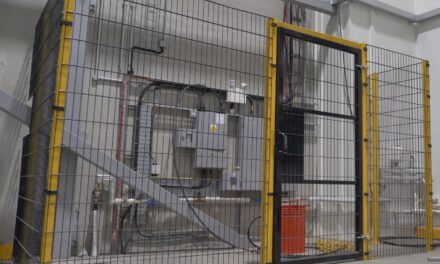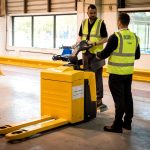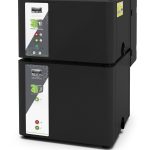 Sandy McCaskie, EMEA sales director at Xplore Technologies, looks at some of the issues that need to be considered when employing mobile computing solutions in hazardous areas
Sandy McCaskie, EMEA sales director at Xplore Technologies, looks at some of the issues that need to be considered when employing mobile computing solutions in hazardous areas
Environments do not come any more hazardous than those areas where there is a risk of explosion. The threat is far more common than many think: explosive atmospheres can be caused by flammable gases, mists or vapours or by combustible dusts. If there is enough of a substance, mixed with air, then all it needs is a source of ignition to cause an explosion.
The Dangerous Substances and Explosive Atmospheres Regulations 2002 (DSEAR) place duties on employers to eliminate or control the risks from explosive atmospheres in the workplace. There are two main strategies for this – either prevent the releases of dangerous substances, or prevent the sources of ignition.
It is a legal requirement for employers to provide workers with appropriate clothing and footwear that does not create the risk of an electrostatic discharge igniting an explosive atmosphere when in zoned areas.
Specifying equipment
When specifying electronic equipment, such as tablet PCs, that need be deployed in zones where hazardous explosive atmospheres may occur, the equipment needs to meet the requirements of the Equipment and Protective Systems Intended for Use in Potentially Explosive Atmospheres Regulations 1996. Electrical equipment that must be installed in hazardous locations is especially designed and tested to ensure it does not initiate an explosion, due to arcing contacts or the high surface temperature of equipment.
The International Electrotechnical Commission (IEC) is the organisation responsible for all international standards for electrical and electronic technologies. The IECEx system is its comprehensive approach to ensuring safety for such technology in explosive environments and it is supported by three Conformity Assessment Schemes. These span equipment, repair and personnel within explosive environments.
IECEx certification for equipment provides assurance that the strictest safety requirements of IEC International Standards, are met, for example, ATEX. The ATEX directive consists of two EU directives describing what equipment is allowed in an environment with an explosive atmosphere. DESAR (the Dangerous Substances and Explosive Atmospheres Regulations) is in effect, the UK application of ATEX.
For repair/overhaul, the system assesses and certifies that organisations that provide equipment selection, design, installation, inspection, maintenance, repair, overhaul and reclamation services do so respecting the strict requirements of IEC International Standards IEC 60079-14, IEC 60079-17 and IEC 60079-19.
Lastly, for personnel, the IECEx Certification of Personnel Competence provides assurance to those engaging or dealing with IECEx-certified persons that their knowledge and competence has been independently verified.
When it comes to selecting technology within these environments there is, firstly, a need to ensure a complete assessment of the hazardous environment into which the technology will be introduced. The IECEx system shows that this is not simply about a given workplace but the workflow within it, the support that that workflow needs and the people that carry this out. There can be no weak links in this chain.
At the point of specification, the technology itself must not present any vector of additional risk. ATEX and IECEx ratings are vital here. Equally important is a thorough understanding of how an electronic device such as a tablet PC or handheld may introduce a risk of ignition. Radiation, high surface temperature and even mechanically generated sparks all need to be accounted for.
There are then also the design issues of the tablet or device itself which need to follow on from the other precautions at play in a hazardous environment. For example, the use of certain gloves will necessitate a resistive touch screen for a tablet PC.
This may seem like an exhaustive approach but, in hazardous and explosive environments this level of attention to detail is vital. It should also be borne in mind that the technology introduced into the process must still add value, especially in the face of such a wide set of safety considerations. Mobile computing is now making a mark across all industries and working environments, and the benefits are many fold. However, when it comes to hazardous areas, these benefits must begin from a place of complete confidence in the safety of the systems being deployed.





